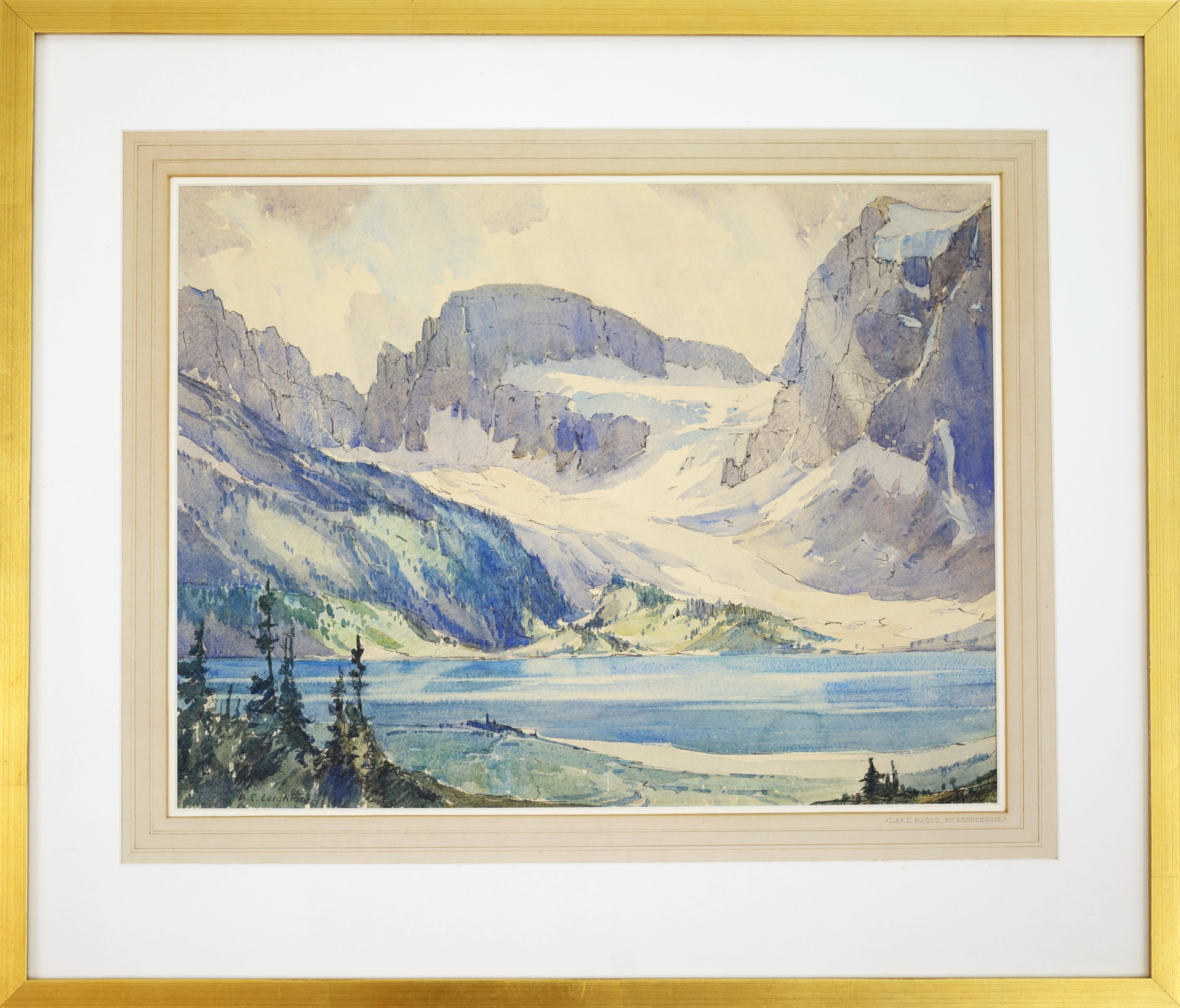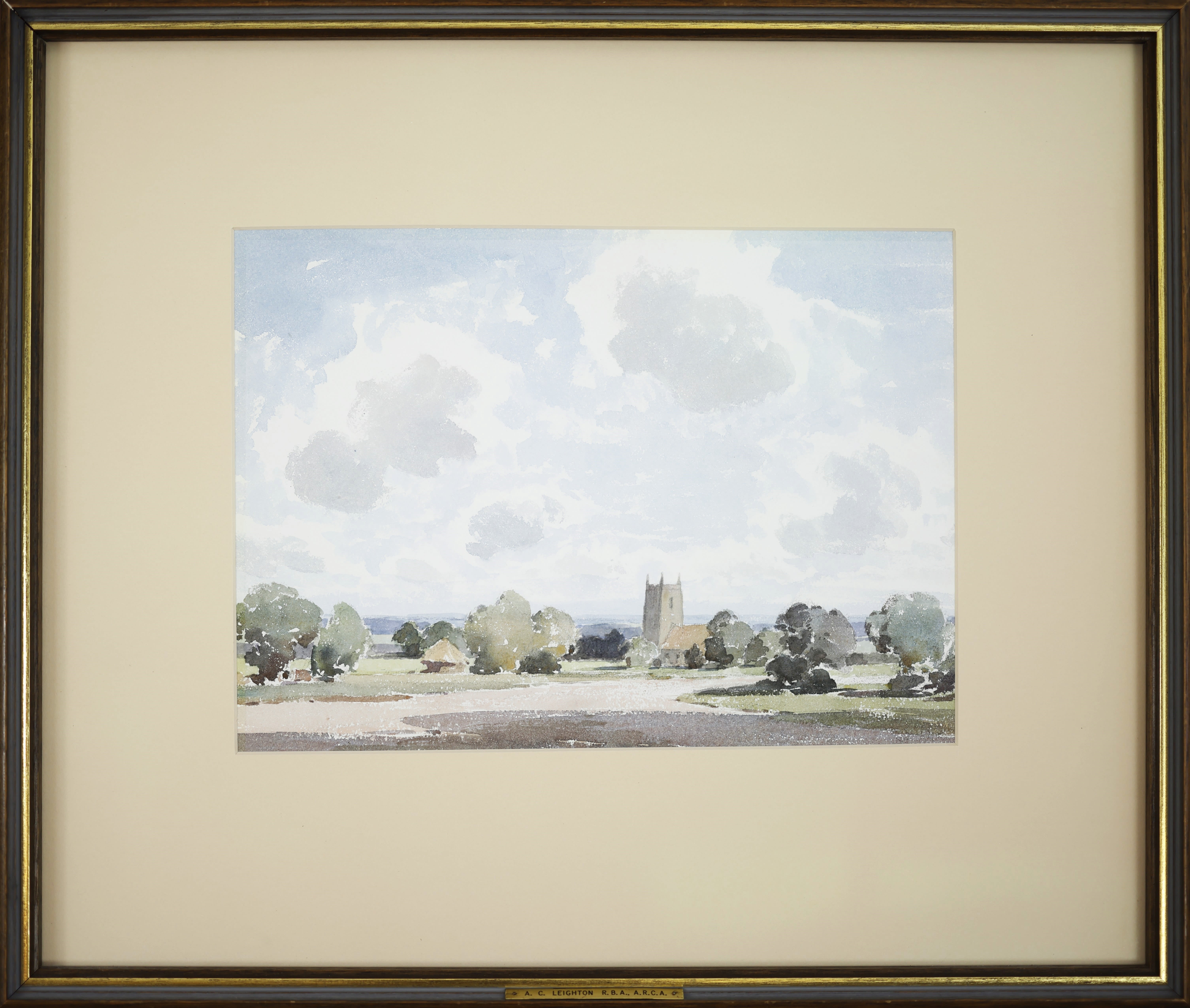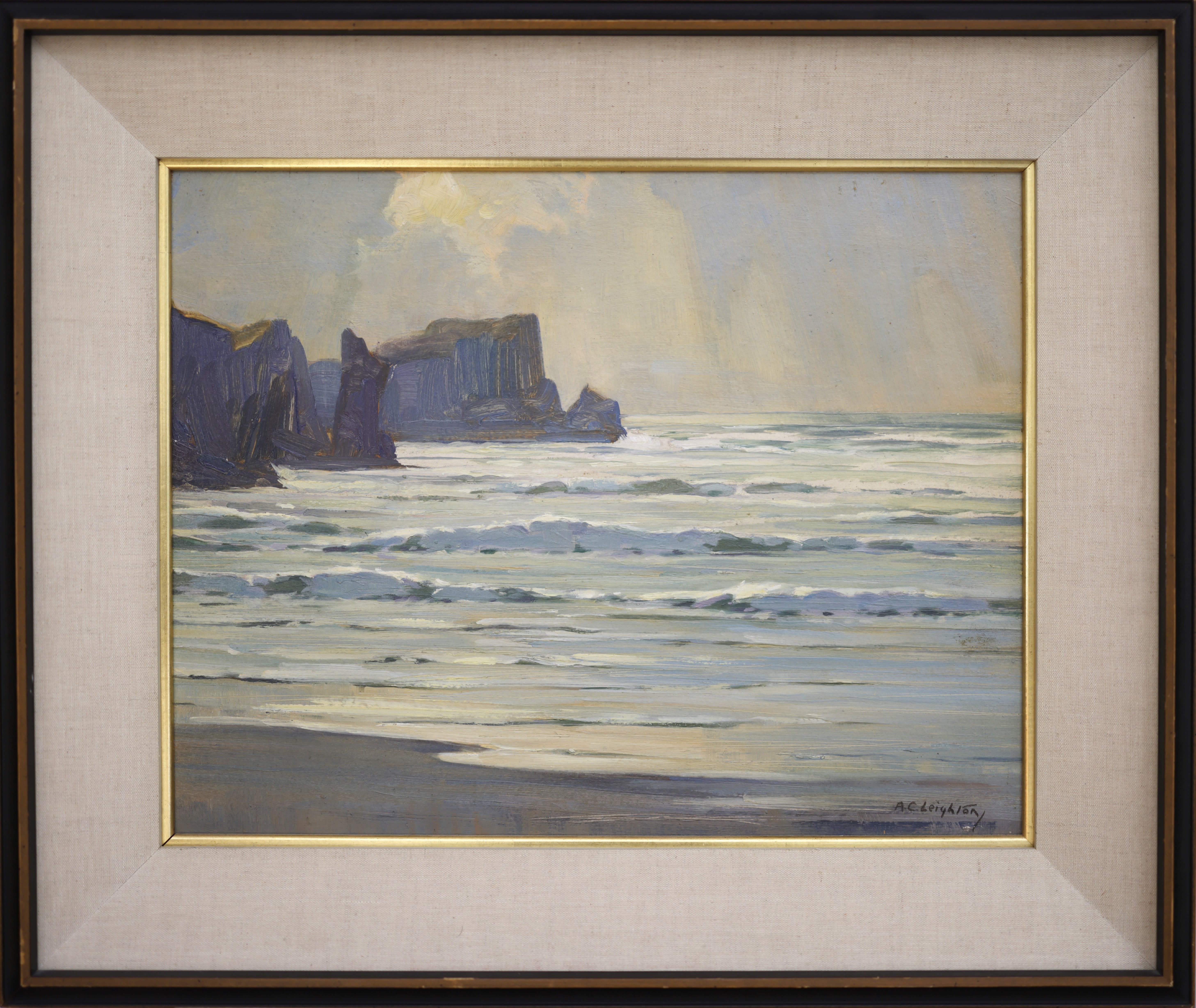“The mountains, the peaks, the glaciers; that's where I want to be and that's what I want to paint.”
Alfred Crocker Leighton (October 27, 1901 – May, 1965) was an English-Canadian artist renowned for his masterful depictions of Canadian landscapes, particularly the Rocky Mountains. Born in Hastings, Sussex, England, Leighton initially came to Canada with the Canadian Pacific Railway (CPR), where he was hired to produce commercial art.
His awe of the rugged Canadian wilderness was immediate, inspiring daring methods like jumping off moving trains and scaling cliffs to capture ideal vantage points for his work.

A.C. Leighton; Lake Magog, Mt. Assiniboine
Early Career and Canadian Connection
Leighton’s connection with the CPR introduced him to the dramatic scenery of the Canadian Rockies. His paintings from this period, many of which remained in CPR’s possession, were tragically destroyed during the London bombings of World War II. Despite this loss, his contributions solidified his reputation as a preeminent interpreter of Canadian landscapes.
After settling in Canada in the late 1920s, Leighton became deeply involved in the Canadian art community. In 1929, he accepted a position as Art Director at the Art Institute of Calgary. That same year, he co-founded the Alberta Society of Artists and served as its first president. His teaching career also led to the establishment of the visual arts program at the Banff School of Fine Arts (now Banff Centre for Arts and Creativity), which remains a cornerstone of Canadian art education.

A.C. Leighton; Quiet Farm in Dorchester
Artistic Philosophy and Style
Leighton’s artwork was heavily influenced by his British artistic training and a passion for plein air painting. He preferred remote, austere landscapes, often trekking to high passes and timberline locations to paint scenes untouched by human development. His approach was rooted in solitude and immersion, accompanied only by his wife, Barbara Harvey, whom he met in one of his art classes and married in 1931. The couple’s backcountry expeditions became integral to his artistic practice, producing iconic works such as views of Moraine Lake and rugged mountain peaks.

A.C. Leighton; Oregon Coast
Achievements and Exhibitions
Leighton’s work received widespread acclaim, exhibited at major venues like the Banff Springs Hotel, Calgary Public Library, and the Eaton Co. galleries across Canada. By 1936, he was a full member of the Royal Society of British Artists, an honour reflecting his growing prominence. His art was also featured in exhibitions at the Vancouver Art Gallery and other national institutions.
Despite declining health, Leighton continued to paint obsessively, dedicating his later years to capturing the Rockies. His works are now housed in significant collections, including the National Gallery of Canada, Vancouver Art Gallery, and private and corporate collections nationwide.
Legacy and the Leighton Art Centre
After Leighton’s death in 1965, Barbara Harvey-Leighton established the Leighton Art Centre, which officially opened in 1974. Located on the Millarville property the couple cherished, the Centre serves as a hub for artists and art education, celebrating Leighton’s enduring contributions to Canadian culture.



